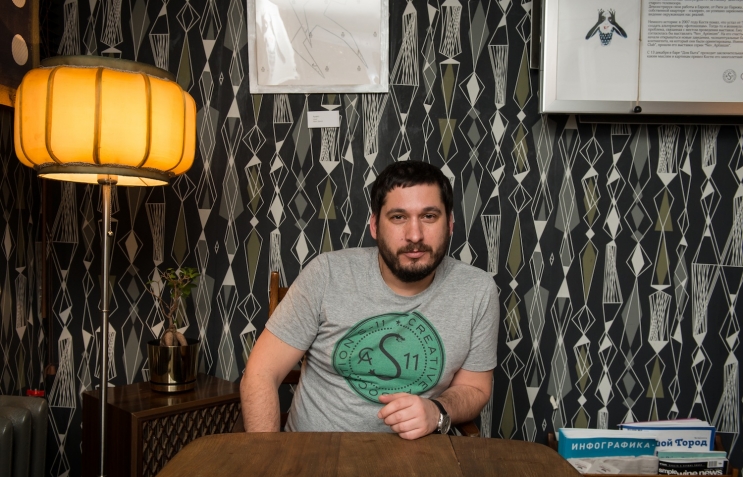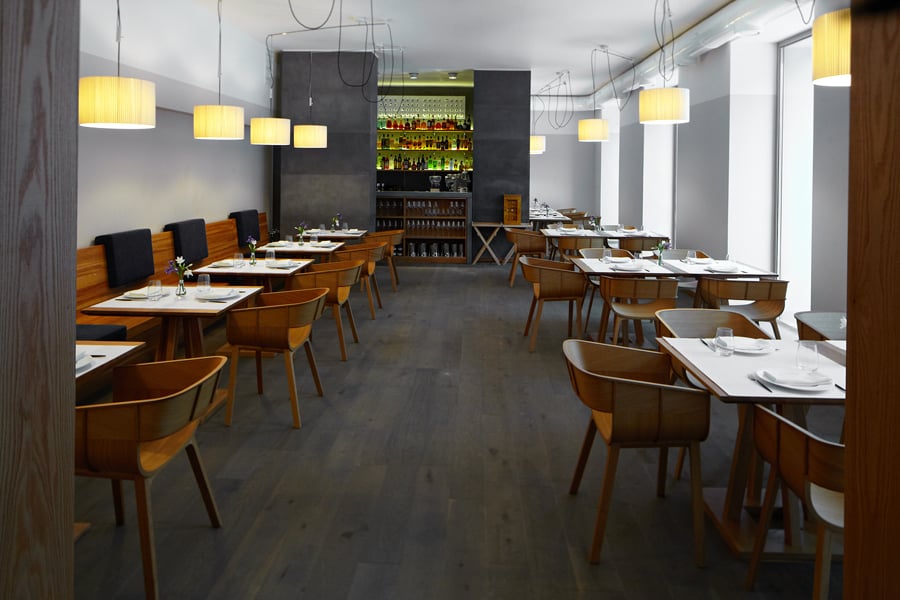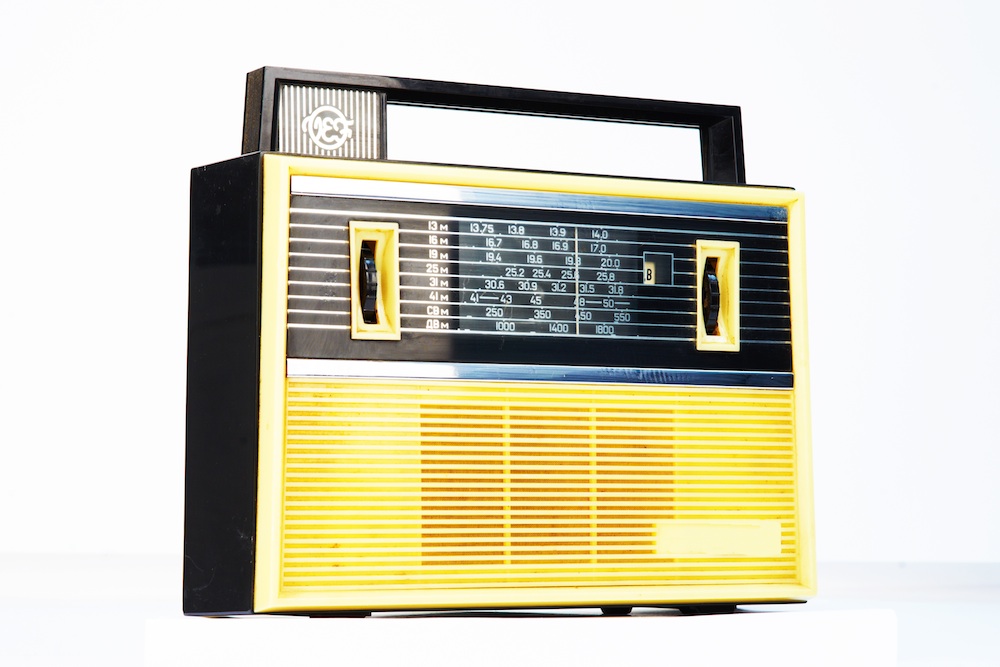Calling the shots: how Siberia is leading Russia’s gourmet coffee revolution
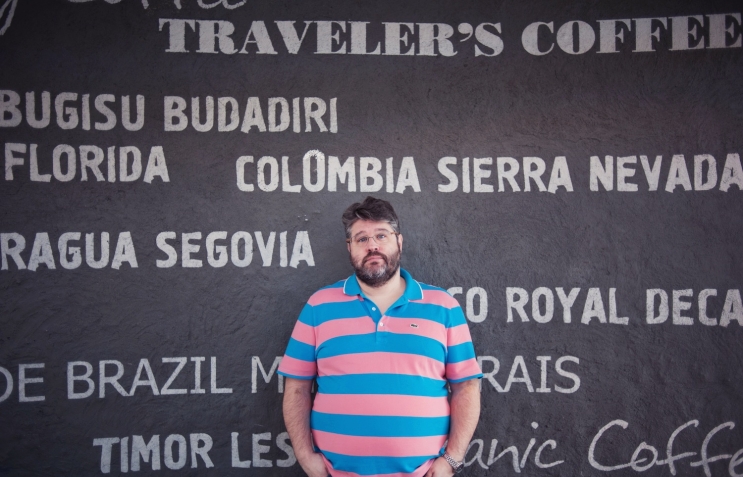
Think Siberia and you probably picture glacial temperatures, Soviet-era gulags and the vast, empty steppe. What you don’t imagine is that in one of its cities a coffee revolution is taking place. Blazing the trail is Christopher Tara-Browne, a former music producer from San Francisco, who moved to Russia almost 20 years ago. After drinking what he describes as a “truly disgusting” cappuccino in an Irish bar in Novosibirsk, Russia’s third most populous city, he decided to strike out on his own.
The origins of Tara-Browne’s coffee chain, Traveler’s Coffee, are nothing if not humble. What began as a small counter in the corner of a Novosibirsk pizzeria in 1998, is today a string of more than 60 coffee shops in 37 cities stretching as far west as St Petersburg and as far east as Vladivostok. There are even branches in Kazakhstan, Azerbaijan and Ukraine.
The company sources its coffee from 25 countries via InterAmerican Coffee, a US broker. Whether it’s Colombian Elan or Indonesian Sumatra Mandheling, every batch comes with the catalogue of labels – organic, Fair Trade, certified by the Rainforest Alliance – expected from any reputable coffee house these days. What makes Traveler’s Coffee noteworthy is where the beans end up once they land in Russia: a roastery in a former factory in Novosibirsk, one of the few in the country. Here, they are roasted to perfection under the watchful eyes of Vitaly Alemaskin and Daniil Panov, roastmasters par excellence. Opening up the roastery was key for Tara-Browne, a self-confessed “coffee nut since the age of 15”. “If you’re not roasting, you’re not involved in coffee,” he quips.
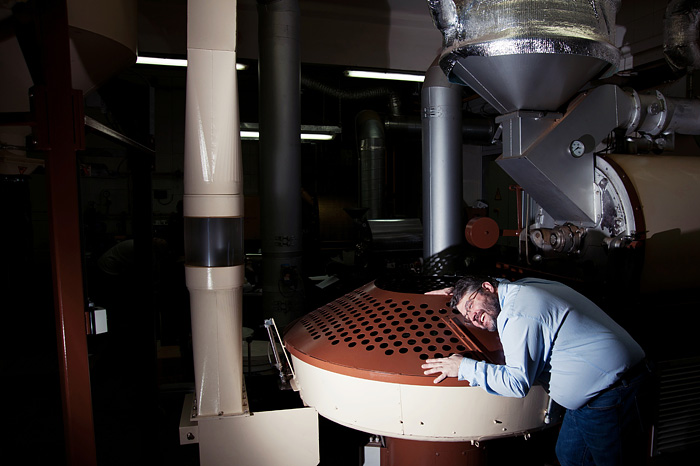
Hiring Panov from Kofemolka, a local chain, was a coup for Tara-Browne, who describes the former barista as “very, very snooty” about all things coffee-related. True to his profession, the 24-year-old is a precisionist, content to pour litres of milk and coffee down the drain when training baristas to ensure that, from plantation to cup, there are no weak links in the chain. The philosophy at Traveler’s barista school is uncompromising: if it’s not a work of art, it goes in the bin. Under Panov’s guidance, each cup of coffee is treated like a precious folk artefact, that is to say, with meticulous care and a lot of Siberian heart.
“Coffee is a delicate product,” says Panov. “Roasting coffee requires a lot of experience. You need to be able to discern shades of flavour, colour and aroma. A few minutes or degrees too many can turn a subtle drink into murky swill. In this respect it is a lot like wine; it’s all about the nuances. And as with wine, the terroir greatly influences the flavour of coffee. The soil, the height above sea level, the number of sunny days, each of these elements is reflected in the taste of coffee as well.”
Despite this snobbishness, Panov is the first to admit that it was the mystical allure of the coffee house rather than the taste of the brew that first drew him in. In this respect, he has a lot in common with many people in Russia. Traditionally Russia is a tea-drinking nation and, at 130 rubles (£2.70) a cup at Traveler’s Coffee, and similar prices elsewhere, coffee is much more of an affordable luxury than an everyday purchase across most of the country. That makes national coffee culture markedly different to what it is in, say, the US or Europe.
“Disposable income is nowhere near western levels,” says Tara-Browne. “Most of our regulars don’t come in two times a day. Going for coffee is a treat, especially in the regions.” While takeaway culture is beginning to take root, drinking coffee in Russia is still much more than just a caffeine fix. It is about lingering in cafes, spending time with friends and eating copious amounts. “In Russia, we can see that more choice is expected in terms of food options and people visit at all times of the day to have a full meal as well as just coffee and a small snack,” says Ross Haxton, managing director of SCG London, a consulting company hired by Shokoladnitsa, one of Russia’s largest coffee shop chains, to advise on rebranding.
As well as the usual fare of sandwiches and pastries, Traveler’s Coffee offers a range of hot meals such as chicken breast in a honey mustard sauce or turkey pancakes. But, says Tara-Browne, despite the differences in consumption patterns some things remain the same: lattes and cappuccinos are bestsellers in Russia as they are elsewhere in the world. And, as in the US, bigger is most definitely better. Both these needs are reflected in the chain’s approach to interior design: ccomfy seating, atmospheric lighting and warm wood panelling are all intended to encourage procrastination.
“Novosibirsk’s coffee cognoscenti may be small in number for now, but their ranks are swelling. Coffee drinkers will happily debate the acidity of the Kenyan bean vis-à-vis the caramel notes of Ugandan coffee”
Novosibirsk’s coffee cognoscenti may be small in number for now, but their ranks are swelling. “In the US, the number of people who really know their coffee is ten times higher than it is in Russia,” he says. “But even here, as elsewhere, we are seeing the rise of the foodie.” The result is a coterie of coffee drinkers who will happily debate the acidity of the Kenyan bean vis-à-vis the caramel notes of Ugandan coffee. While Traveler’s Coffee no longer serves kopi luwak (civet coffee), the world’s most expensive bean, Panov will roast it to order. “We really do have clients like that. An increasing number of them,” he says. For those who don’t know, civet coffee’s price tag is attached to its provenance: it is made from the beans of coffee berries after they have been eaten and excreted by the Asian Palm Civet, a cat-like creature found in south-east Asia.
The 45-year-old Tara-Browne sees the arrival of Traveler’s Coffee as playing an integral role in the country’s ever-growing love for the beverage. This appreciation of gourmet grounds is part of a second wave of coffee appreciation to wash over the country; the first was somewhat less refined. Following the collapse of the Soviet Union, sales of freeze-dried coffee soared, a trend that still continues. The Russian coffee market is expected to rise annually by 5% in terms of volume until 2016, according to market research company Euromonitor. Both Kraft and Nestlé are boosting production as they vie for market share.
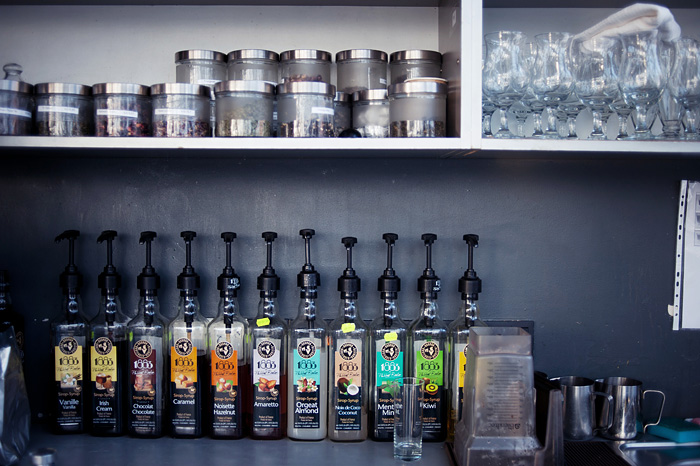
Success for Tara-Browne was harder won. He first travelled to Novosibirsk in 1994 as a member of the Baha’i faith. Aged 26 and in search of adventure, he’d leapt at the chance to join a month-long mission trip to Russia. He remembers Siberia in those days as being “really crazy”. Boris Yeltsin’s election a few years prior had come with a number of wide-ranging reforms including the privatisation of government-owned enterprises. The result was a mad dash for state assets, rapid wealth creation among a select few and the rise of the oligarch. Marriage to a local woman soon followed, and shortly after came the stomach-churning, life-changing cappuccino.
Against this backdrop, in 1997, Tara-Browne and his wife Svetlana set off on a coffee pilgrimage across the US, a quest that ended with pledges from five investors, both American and Russian. But it was not to be. All five bailed amid the Russian financial crisis the following year. In an amusing twist of fate, it was Tara-Browne’s ex-mother-in-law who saved the day by agreeing to invest a hefty sum in the venture. Yet even once it had launched, Traveler’s Coffee only made around 3,000 roubles (£60) a day – the birth of the gourmet coffee guru was yet to happen. “It really sucked,” he says. “But in those days we were stupid enough or young enough to sit around and believe it was eventually going to happen.”
Although Traveler’s Coffee has a firm footing in Russia today, establishing a toehold in Moscow or St Petersburg, where exorbitant rates are a barrier to entry, is still proving problematic. “In Moscow, McDonald’s is king. They have 20 tills, ten people deep,” says Tara-Browne. “The issue is that you have to have deep pockets, be patient and be prepared to lose money.” While independent coffee shops are beginning to pop up, chains dominate the landscape; Starbucks, which opened in Moscow in 2007, has now grown to 60 sites.
If recent history is anything to go by, however, Tara-Browne is likely find a way to conquer the Moscow market; plans to open up a roastery in the capital are already in place. In the meantime, back in Novosibirsk, the coffee entrepreneur is busy trying to open a further 70 coffee shops across the country by the end of 2013. “We finally have the scale of growth where we can meet the demand that exists in the country.” So next time you ponder the world’s coffee hotspots, by all means think of Auckland, London and Milan – just don’t forget Siberia.
